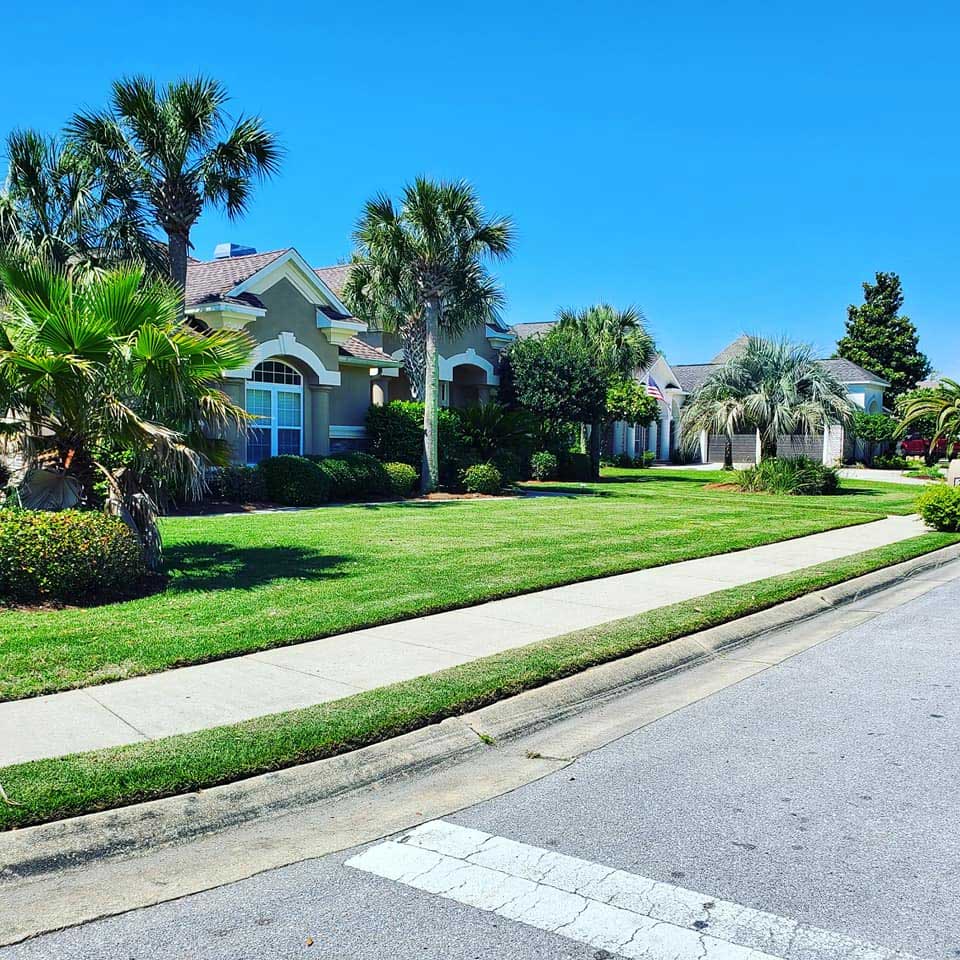It’s that time of year when the sun is shining longer and many of the plants around us start waking up from their winter nap. The cherries and Japanese magnolias have bloomed and now the azaleas start their show. Soon, it will be your lawn greening up and, for many residential homeowners, this represents the beginning of the annual rite of trying to create that perfect lawn. At the beginning of spring, the days are beautiful and it’s great to get outside. But then comes May through September when it’s hot as blazes. This is when you can barely keep up with the growth of the grass and plants you don’t want – aka weeds – grow lightning fast. Fortunately, your local UF/IFAS Extension Office is here to help all along the way. Now is when some planning and prep work will help you be able to sip a cool iced tea looking out at a nice, green lawn in the middle of August.
First, let’s be honest, there is no such thing as a perfect lawn. Just like humans, no lawn is perfect, and all will have their flaws. However, with proper planning and care, we can create conditions that favor a really nice lawn with few flaws. Typically, what folks see as their lawn’s imperfections include the presence of weeds, dying areas caused by various insects or fungi, and poor turf coverage and/or density. It’s important to remember that the presence of some of these flaws at some point during the growing season is okay if the lawn is healthy and looks good overall to the homeowner.
To help against the weeds that drive you nuts May through August, this time of year, when the azaleas are blooming, is when preventative weed control should be done. Pre-emergent herbicides can be applied as granules and watered in, or as a liquid form, to create a weed control barrier for the annual weeds that pop up from seed every year. Common pre-emergent herbicide products available to homeowners include those that contain the active ingredients (and a common example brand name) atrazine (many brands), benefin+trifluralin (Team Pro), dithiopyr (Dimension), isoxaben (Gallery), pendimethalin (Pendulum), and prodiamine (Barricade), among others. These products target different weeds, such as grassy vs. broadleaf, so proper identification is important. The UF/IFAS Extension Office loves weed identification visits and emails!
If weeds are taken care of early, the remaining tasks to keep the lawn as flawless as possible include proper feeding, mowing, and watering. Annual lawn fertilization isn’t a bad idea, but may not be what’s holding it back. A soil test, available at your local UF/IFAS Extension Office, can help you verify if any deficiencies exist. Many lawns, such as centipede grass lawns, can look good without an annual fertilization, especially if using mulching mowers and mowing at the right height. If fertilization is needed, do it at the right time and don’t overdo it. Poorly timed fertilizer application can result in wasted effort while excess fertilization can lead to poor quality turf that is susceptible to insect and disease pressure. Improper timing and rate can also negatively impact the environment. Always feed after the grass has completely greened-up, typically mid-March in North Florida. As for rate, when using a general slow-release turf fertilizer, such as a 16-0-8 available in many local garden centers, only six pounds of fertilizer is needed for every 1,000 square feet.
Once those tasks are complete – pre-emergent herbicide in February, fertilization in mid-March – it’s all about proper mowing and watering throughout the growing season. Doing these two things properly actually reduces your chance for weeds and helps the lawn look healthier. Improper mowing height is probably one of the most common mistakes that can severely stress out a grass plant. Centipede and zoysia lawns prefer a short cut (around two inches) while St. Augustine and Bahia grass like it on the longer side (around three and a half inches). If the lawn is a little shady, raise the height for all lawns another one-half to one inch to give it more time in sunlight.
Too much water is another common stressor. Ideally, you only water the lawn on an as-needed basis. Too often homeowners over-water the lawn and create conditions favorable to fungi. Healthy St. Augustine grass, which generally requires more water than our other common turf grasses, can go every five days without an irrigation event of at least half an inch during the summer months. In the spring and fall, it goes up to about every 10 days. Florida’s rainfall patterns are anything but evenly dispersed, so adjusting your irrigation accordingly is required to provide only the water the plant needs.
Striving for the perfect lawn has frustrated many a homeowner. Remember that perfection is impossible and that your home should be a stress-free zone. Like a line from a good self-help book, consider those imperfections as characteristics that make your lawn more unique. Some homeowners are opting out of maintaining a lawn all together and going for more planting beds, mulched areas, wildscapes, and/or fruit and vegetable plantings. Others see the diversity of plants in a weed-infested lawn as supporting urban ecosystem functions.
In any case, UF/IFAS Extension is here to help you reach your goal with science-based recommendations. Much more information regarding lawn maintenance is available from UF/IFAS Extension online at the Your Florida Lawn website (http://hort.ufl.edu/yourfloridalawn/). The UF/IFAS Extension Leon County Office is hosting a half-day session on preparing your lawn and garden for spring on February 29, 2020 from 9:30 a.m. to 12:00 p.m.
Mark Tancig is the Commercial/Residential Horticulture Agent at UF/IFAS Extension Leon County, an Equal Opportunity Institution. For gardening questions, email the extension office at AskAMasterGardener@ifas.ufl.edu.


